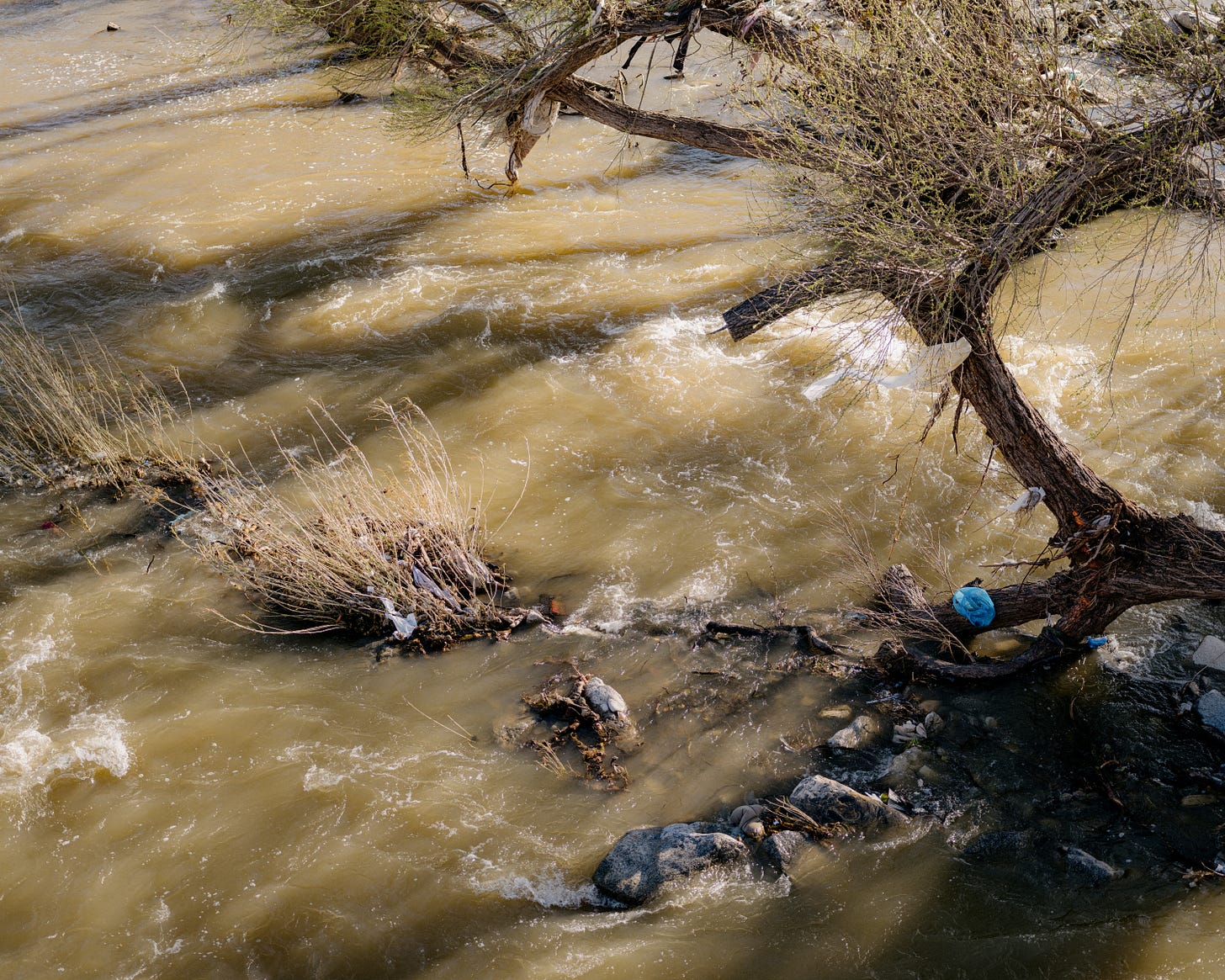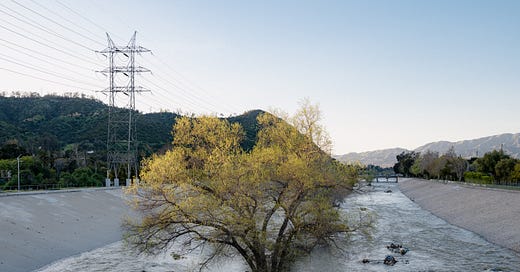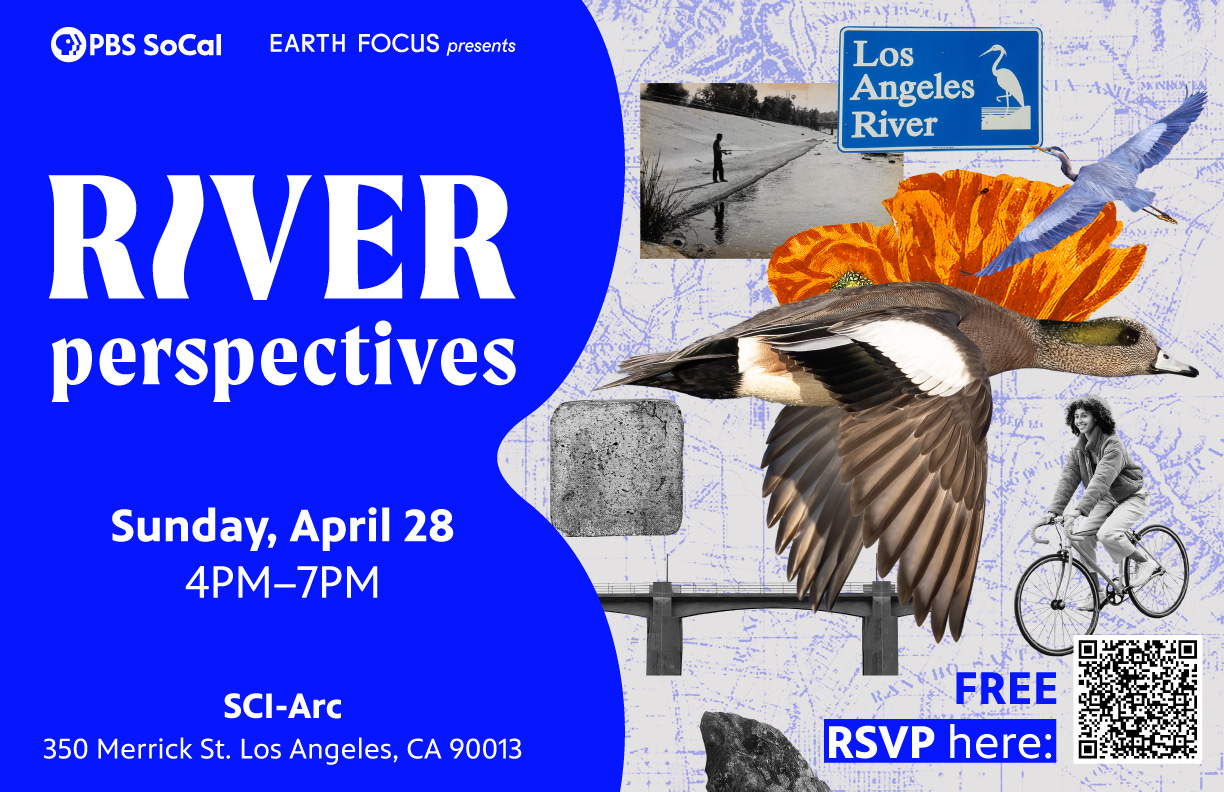As Earth Day rolls around, many of the same questions arise for us: Where are we headed and what have we done since the last Earth Day? Have we made some progress or changed minds? Have we used less plastic? Saved water?
On the more local level we both have been thinking about how preserving history could be connected to preserving our environment. Is there a connection? If we open the door for more understanding about the history of how green space was created in a neighborhood, will people care or want to protect it more actively?

Last year, Julia and I were invited to participate in PBS SoCal’s Earth Focus documentary series. Episode 2, “Transforming the Los Angeles River,” explores the many futures of the Los Angeles River and its surrounding communities. The episode was recently released and can be viewed at the following link:
Transforming the Los Angeles River | Earth Focus | Season 5, Episode 2 | PBS SoCal
When we received the request for us to be behind the camera, the first question that came to my mind was Why me? Why is my story worth highlighting?
At the time, we were preparing to launch a yet-unnamed, but exciting, cultural atlas and oral history project that centered the histories of communities around the Glendale Narrows. For months, nearly every waking moment was spent thinking about the river and stories of the individuals who contributed to this pilot. Even when I was asleep I was thinking about this project, I had one too many nightmares in which I accidentally erased the Google Drive that housed all of our work.
When we were contacted by Matthew and Francesca of AHRA Films to take part in this series, Julia was excited, and I was doubtful.
Not necessarily doubtful of Matthew and Francesca, but doubtful of what I could contribute to this series. The months leading up to the launch of Take Me to Your River represented the most time I had ever thought about the river in my life. Growing up, the river was a no-go zone. There weren’t any access points, and my parents were happy to keep it that way. To them, the river was dangerous, dirty, and desolate.

The earliest memories I have were created as a teen walking home after high school on the bike path. Here I noticed that the riverfront was slowly turning into a commercial strip of businesses in which I sadly would never feel comfortable in.
Kept away from the river by my parents and later by external forces, there wasn’t much that I felt I could speak about. I didn’t not want to come across as an expert and I did not want to misconstrue information or become a spokesperson for my community, where a variety of opinions exist on the topic of river restoration and gentrification.
It occurred to me that my hesitation and questions of why me was probably the same sentiments that many of our pilot participants were probably experiencing.
To calm these fears, I repeatedly told them the following, who but yourself is able to tell your story? I had to listen to my own advice.
When I first met Matthew and Francesca, they explained to me the basic premise of the episode and some topics and issues they hoped I could touch upon: what it was like growing up in Elysian Valley, my understanding of the changes occurring in the neighborhood, and the role that the revitalization of the river was playing in accelerating those changes.
Filming was a new experience. They mic'd me up and followed me around as I pointed out the numerous wooden fences that have quickly become symbols of gentrification across the city. Or the flipped million dollar houses that once housed my neighbors and their families. There were definitely plenty of stares, some were a bit kinder like my cousins who screamed out my name as they happened to drive by right as we were filming. I was afraid I would run out of things to say, but when you’re really passionate about something you can’t stop talking about it.
No topic was left untouched; my childhood, my opinions on the bike path, my thoughts on river revitalization, the influx of new residents and gentrification, the food desert that is Elysian Valley, and the violence that plagued this community during the 90s.
We were even able to showcase Mercadito, a biweekly free food distribution that was born out of a necessity by residents to have access to produce in a community where not one grocery market or corner store exists. There used to be one by St. Ann’s Church but that closed a while back.
I acknowledge that Elysian Valley, and other communities around Northeast LA, have changed drastically over the past few years. I felt really hopeless walking by countless construction sites that promised to build only luxury lofts and nothing else.
It’s hard to describe that feeling when you come face to face with the reality that the neighborhood that you grew up in, its character and its feel are gone forever. I don’t want to accept this new reality, but I also don’t want to keep reminiscing about a past that won’t come back. In a way, Take Me to Your River helps to ease this hopeless feeling a bit. Talking with neighbors or residents, both new and old, reminds me that the impact of this project is apparent in those moments of joy that come across during our interviews or during photo sessions where participants feel that they are seen and that their stories matter.
If you haven’t already, I encourage you to watch both Episode 1 and Episode 2 of Earth Focus’ Los Angeles River Series, and to join us on April 28, 2024 for a special screening of these episodes. More information can be found here:
Happy Earth Day!




